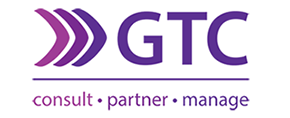Retirement funds, how relevant are they?
_______________________________________________________________________________________________________
How does a South African retirement fund work, and more importantly, will it work for me?
The introduction of Two-pot prompts some reflection and perhaps introspection as to how relevant an approved retirement fund is in an investors’ financial planning armoury.
The sacrosanct nature of approved retirement funds
 Approved retirement funds in South Africa include pension, provident, and retirement annuity funds. ‘Approved’ because there are tax deductions permitted, (mostly) favourable tax consequences on the investments made, and some complex tax consequences on the proceeds. All of this is within the auspicious of SARS, and in terms of promulgated regulations. Retirement funds have the financial oversight and regulation of FSCA and other government bodies.
Approved retirement funds in South Africa include pension, provident, and retirement annuity funds. ‘Approved’ because there are tax deductions permitted, (mostly) favourable tax consequences on the investments made, and some complex tax consequences on the proceeds. All of this is within the auspicious of SARS, and in terms of promulgated regulations. Retirement funds have the financial oversight and regulation of FSCA and other government bodies.
Up to 27,5 % of a member’s taxable income can be invested into a retirement fund without incurring tax, with a ceiling of R350 000 per year. This favourable tax treatment is designed to encourage saving and facilitate employees’ accumulating funds to cover their retirement. There is little social financial support offered to retirees who don’t provide for their own needs, with government grants limited to a little over R2 000 per month with several other financial constraints. Socially orientated countries – some of which are very rich when compared with South Africa (such as these Scandinavian countries – Norway and Sweden) have generous inclusive schemes. Healthcare, housing and transport also being catered for.
Importantly, these Scandinavian benefits aren’t free (which is often a misconception), but too are based on accumulated compounding contributions over time by the investor. Administration is centralised, which has historically been administered in a professional, honest and end user-centric manner. Various initiatives from our own government seek to emulate at least the principle of some of these socialist countries including the much debated NHI.
Regulation 28 of our Pension Funds Act governs how funds can invest by prescribing certain assets. The intention of the regulation is to limit exposure to high-risk assets ensuring asset diversification. Investors are thereby supposedly shielded from extreme market volatility, resulting in more consistent and predictable growth.
The role of retirement funds in a long-term financial plan

Approved retirement funds certainly do provide a solid tax-efficient base for creating disciplined wealth accumulation over a member’s working life. Contributions grow tax-free until retirement, and pensioners can withdraw a portion of their assets without incurring immediate tax liabilities, allowing for a smoother transition into retirement.
An approved retirement fund is not however an elixir – as many retirement fund members would naively choose to believe. Just as one can’t provide an answer to the hypothetical question ‘how long is a piece of string?’, there are lots of other related considerations when asked ‘is a retirement fund sufficient for my pension savings?’. Unavoidable market volatility, fees and costs, tax at retirement, regulatory constraints, and the costs of insured benefits, all need to be considered and managed. Most important of all is ensuring that the amount invested is realistic in comparison with a member’s salary and future expectations. Time and compound growth must both be allowed to unfold their mathematical powers (defined by Einstein as the eighth wonder of the world). Members need to heed that any premature withdrawal (on any investment) will reduce these compounding features (as will a Two-pot payout…).
Depending only on one’s approved retirement fund for future income during retirement is not a realistic goal. How can (say) 12% of one’s salary, invested for (say) 40 years provide 100% of the income needed for (say) a further 30 years? To achieve comprehensive financial retirement goals, additional discretionary routine savings mechanisms must be implemented. Tax-free savings accounts (TFSAs), stock market holdings (such as through unit trusts both locally and internationally), fixed property and other methods of wealth accumulation should be included in an investment plan.
Being financially literate and understanding how to invest
 Saving for anything, though probably most importantly for retirement, requires that an investor be knowledgeable about what they’re doing. Understanding the different types of investment options, cost structures, risks, regulatory parameters, and a fundamental perspective of compounding growth will allow an investor to make informed decisions.
Saving for anything, though probably most importantly for retirement, requires that an investor be knowledgeable about what they’re doing. Understanding the different types of investment options, cost structures, risks, regulatory parameters, and a fundamental perspective of compounding growth will allow an investor to make informed decisions.
Understanding that one’s financial future is ultimately the responsibility of oneself is perhaps one of the most important realisations associated with retirement financial planning. There’s plenty to read (for free) on the subject and professional advice should be sought, not only at actual retirement crunch-time but during the planning and implementation phase.
Potential (two) potholes along the way?
![]() Two-pot represents a substantial compromise in the way retirement funds are meant to work. By providing early access to a portion of retirement assets for immediate needs the principles of time and compounding are diminished. Government, under pressure from union members insisting on having access to their retirement funds initiated the Two-pot System, a compromise between compulsorily providing for retirement while having access to these funds.
Two-pot represents a substantial compromise in the way retirement funds are meant to work. By providing early access to a portion of retirement assets for immediate needs the principles of time and compounding are diminished. Government, under pressure from union members insisting on having access to their retirement funds initiated the Two-pot System, a compromise between compulsorily providing for retirement while having access to these funds.
Two-pot introduces behavioural risks and regulatory ambiguity. Early access allows indiscriminate use of these monies (despite the original intention being defined as emergency funds) especially among investors with limited financial knowledge. This further emphasises the importance of financial education and literacy. The implementation of the Two-pot System will complicate fund management and compliance, as well as a fund’s administration. Costs with regard to these system complexities, introduced by regulators, will escalate.
Retirement fund default regulations and trustee practices
Important legislative changes, such as the implementation of default regulations in 2019, have reinforced the environment for protecting and educating retirement fund members. These provisions of the Pension Fund Act require all retirement funds to include default investment portfolios, preservation options, and post-retirement annuity plans, as well as making it a regulatory requirement that members are ‘counselled’ before making any irrevocable retirement fund decisions.
These regulations also ensure that trustees act in the best interests of their members by simplifying options, lowering fees, and encouraging consistent saving habits. Trustees are also required to disclose information publicly and ensure that the prescribed counselling mechanisms exist explaining to members the default options and other choices available to them.
So all said, should I use an approved retirement fund?
Even if everything else was ignored (and of course it can’t be) getting the government to effectively subsidise one’s savings by something like 20% – 40% (depending on one’s income tax rate) means using one of several options of approved funds is a no-brainer.
Further behavioural benefits such as regular compulsory contributions and a tangible goal – way into the future – help many investors. Resisting the temptation to access monies ahead of their desired objective is still achieved with an approved fund, notwithstanding Two-pot. Regulation, tax, and investment consequences all provide a much needed obstacle to the temptation of early access. Yes, an approved retirement fund should be the cornerstone of most investors’ long-term financial planning.







